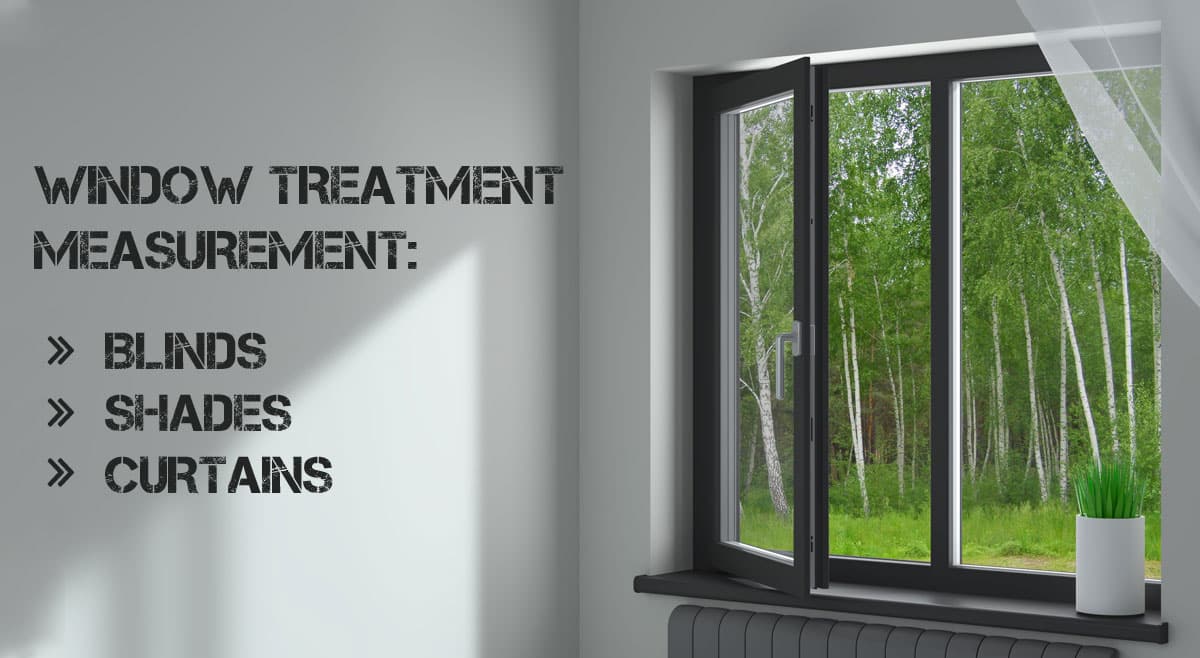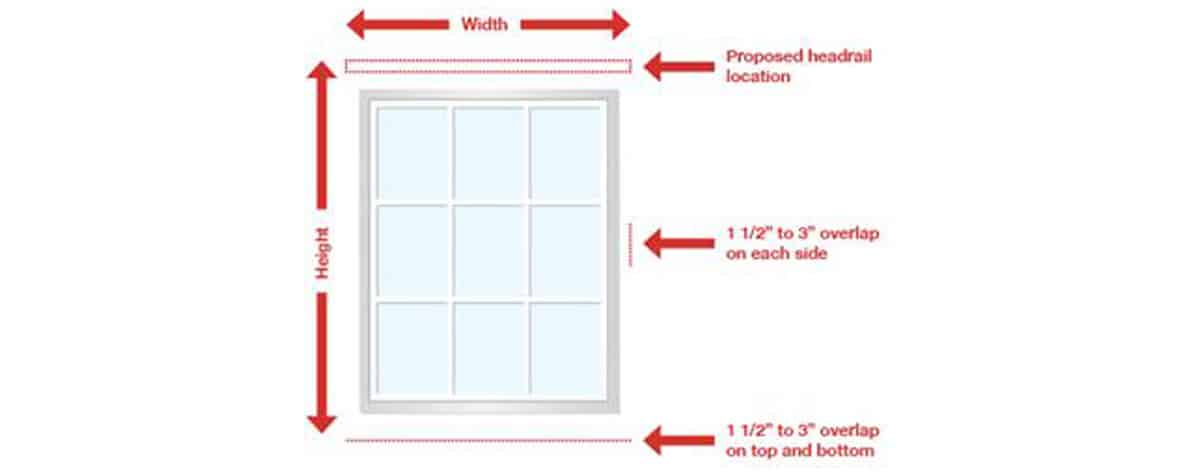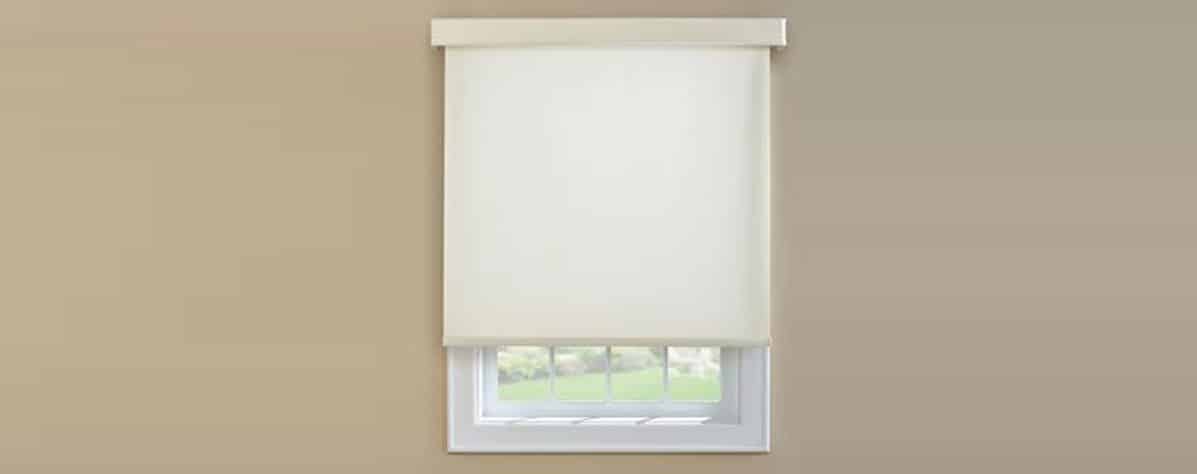Window Treatment Measurement: Blinds, Shades and Curtains

Window curtains and blinds are multi-utility accessories. The general use of curtains, blinds or shades is to block the view for privacy and protection from sunlight, but due to the endless availability of beautiful options, they also contribute to the overall décor of the house. If you plan to purchase new curtains, blinds or shades, apart from choosing the color and material, it is critical to choose the right size – undersized curtains or blinds aren’t of any use and oversized ones wouldn’t look great either.
The first step in choosing any window covering is measuring your window for a good fit. Attractive window treatment for a small window is going to be different from a sliding glass door. Also, depending on what you are purchasing, the measuring technique differs.
Measuring a window for blinds
- Inside-mounted horizontal blinds: Inside mounted blinds are those which only cover the glass area and don’t overlap the window frame. Here is how you can measure the window for it.
1. Measure the width at three different places – top, middle, and bottom. If there is a difference, use the narrowest width.
2. Measure the height at three different places – left, middle, and right. If there is a difference, use the longest height.
- Outside mounted horizontal blinds: Outside mounted blinds are those which overlap the window frame and may be greater in size than that of the frame.
1. Measure the width where you’d like to place the blinds. Add a minimum of 1.5 inches on both sides which would ensure privacy and sufficient light blockage.
2. Measure the height from the top of the headrail location to the sill. It is recommended that you choose the top and bottom location as per your preference about the reach of the blind. You can consider adding 1.5 inches from the base of the window for proper light control and privacy.
 Source: Steve’s Blinds and Wallpaper
Source: Steve’s Blinds and Wallpaper
- Inside-mounted vertical blinds
1. Measure the width at three different places – top, middle and bottom – from opening to the sill. If there is a difference, use the narrowest width.
2. Measure the height at three different places – left, middle and right – from opening to the sill. If there is a difference, use the longest height.
3. Measure the two diagonal lengths of the window. If there is a difference in the two lengths, an outside-mounted blind is recommended.
- Outside-mounted vertical blinds
1. Measure the width of the window and include the frame in the measurement. Add 3 inches on both sides for optimum privacy and light blockage.
2. Measure the height from the top to the bottom. You can choose the top and bottom locations as per your size preference. You can add 3 inches at the top as the mounting at the top would require additional space.
3. Patio door – if the blinds are being purchased for the patio door, make sure the length up to the floor is not considered. Measure the length from the top to the floor and deduct a minimum of 0.5 inch for clearance and better operation.
Measuring the window for roller shades
- Inside-mounted roller shades – since these shades are installed inside the frames, a minimum depth of 2 inches without a valence and 4 inches with a valence is necessary. The rest of the window measurement instruction is the same as that of inside-mounted vertical blinds.
- Outside-mounted roller shades – these shades can be mounted over the existing molding or above it. If the shades are to be mounted on the wall above molding, the window treatment sizing would be the same as that of outside mounted vertical blinds. If the shades are to be mounted on the existing molding, this is how you need to take the measurement:
1. Without a valance – measure the width of the trim from the outer edges.
2. With a valance – measure the desired width that you’d like to cover and add 3 inches on both sides for adequate privacy and light control.
3. Measure the height from the top of the trim to the bottom location depending on how far you’d like the shade to reach at the bottom.
 Source: Steve’s Blinds and Wallpaper
Source: Steve’s Blinds and Wallpaper
Measuring the window for curtains: The correct measurement of the width of the window depends on the kind of drapery style you are purchasing.
- Width for side panels – this drapery style isn’t meant to cover the entire window; it is rather hung at the sides for décor. You simply need to measure the width that you want the drapery to cover as the custom draperies come with the appropriate fullness.
- Width for full window coverage. If you wish to cover the entire window, follow the below instructions for measurement:
1. Measure the width of the window from three different locations as suggested in blinds and shades. Use the longest measurement if there is a difference and 12 inches on both sides.
2. Take the above number and divide it by the number of panels you want. Let’s understand this with an example: Suppose you wish to order two curtain panels for a 40 inches wide window. First you add 24 inches to the original width and then divide it by two (two curtain panels are required), you get 32 inches. Hence, both the panels are required to be 32 inches wide.
Length of the curtain: Measure the height from the top to the bottom. You can choose the bottom location depending on how long you wish the curtain to be. For patio doors, make sure the entire length up to the floor is not considered, a minimum deduction of 0.5 inch is necessary so that the curtains do not touch the floor and get in the way of the door’s sliding mechanism.








